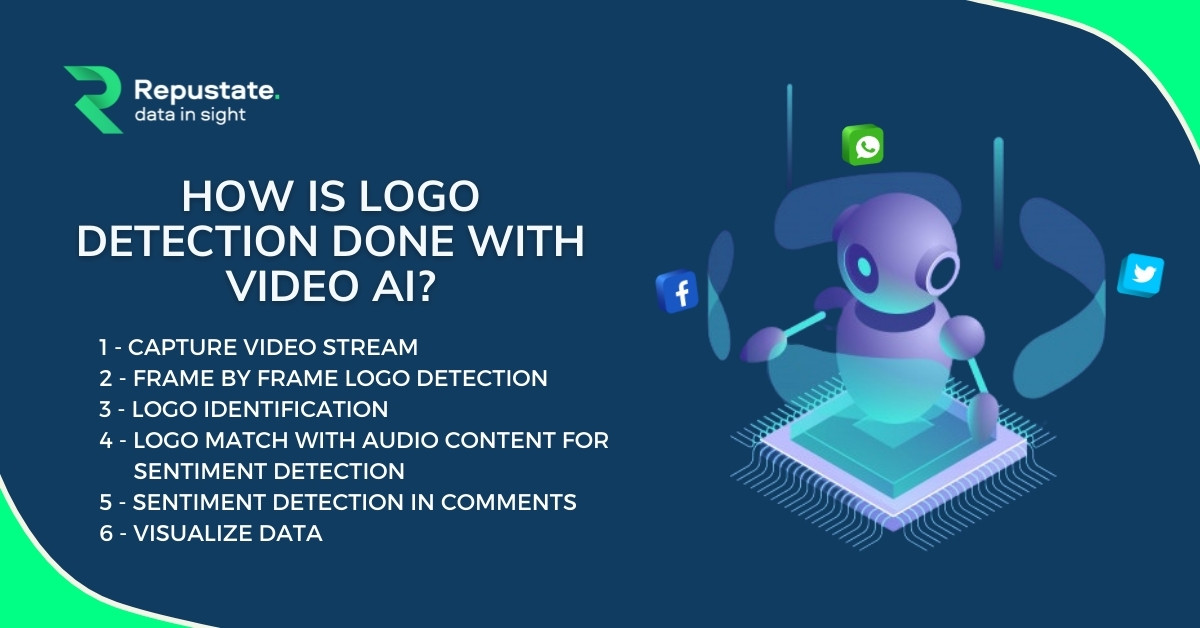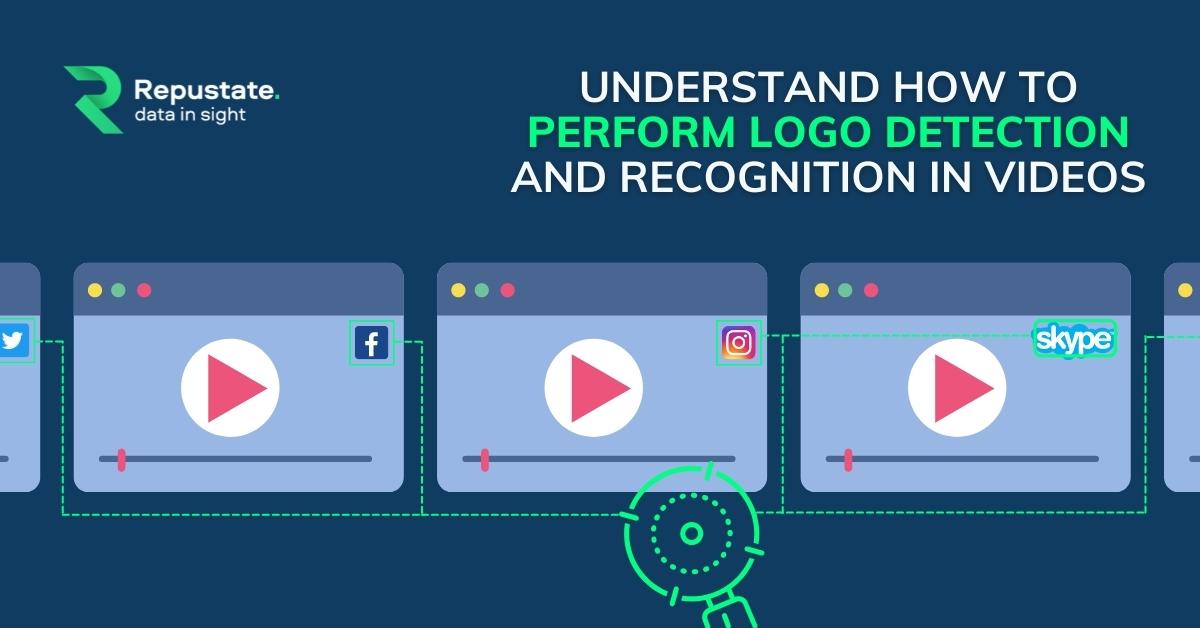Understand How To Perform Logo Detection and Recognition in Videos
Logo detection allows brands to recognize their presence by scanning images and real-time video streams for customer insights. In this article you will see why this feature is so important in a sentiment analysis software. You will also read in detail how logo identification and extraction works to provide you with the insights you need to improve your products and marketing processes.
What Is Logo Detection & Recognition?
Logo detection and recognition is a machine learning task that detects logos wherever they may appear online. It’s related to object detection and is commonly used to detect and identify brand logos in images or videos. While there are a variety of tools available for this purpose, for sentiment analysis, you need a platform that has an in-built capability to recognize a logo and extract it for emotion mining. This means that the sentiment model needs to have a very intrinsic named entity recognition (NER) that encompasses the numerous logos related to your particular industry including competitors.
Why Do Companies Need Logo Detection & Recognition Tools?
Companies use a variety of cloud-based logo detection tools for many different reasons from marketing to brand protection to gaining insights into how their customers are reacting to their brand. Take for example, brand video content on social media, especially user-generated content has become one of the most popular ways of content distribution. Product review videos on social media platforms are so popular right now that it is a mistake not to leverage them for consumer insights through social media sentiment analysis.
The issue that usually arises, though, in capturing sentiment data during a live stream of a product review is when content creators don’t say the same of the products they are comparing you to. In such a situation, a text analytics tool without cloud-based logo detection cannot really decipher or mine sentiment. Similarly, if someone is using your product without your consent, or you want to know the perception of your brand without active participation from customers using surveys and such, logo detection is the only way you can gain useful insights.
Let’s dive into the details of some of the main reasons brands use logo detection and recognition.
- Brand monitoring & social media listening
One of the most popular use cases for logo identification and extraction is brand monitoring and social media listening. Here, companies can monitor social media and other websites for videos and images where their products appear, but their names aren’t necessarily mentioned. This helps you get key information about how different demographics of your target audience feel about your products. These insights can shape the strategies you use to improve your product line, operations, and customer service offerings.
- Brand protection
With a cloud-based logo detection and extraction tool, you can see how other stakeholders like stockists, business partners, affiliate marketers, and even social media influencers use your logo and portray your brand. You can detect unsolicited use of your logos in promotional materials. You can also identify cases where stakeholders or other external parties have used your logos contrary to brand guidelines or without permission.
- Public relations
Logo detection and extraction allows you to identify the use of your logos in reviews or social media posts that could damage your reputation. In turn, you are able to respond to any issues or public relations crises before it’s too late. Simply put, it allows you to take a more proactive approach to your public relations management.
- Sponsorship monitoring
Combined with the ability to analyze video and images, logo identification and extraction allows you to find instances where your logo appears on images or in video of events that you have sponsored. This gives you the ability to measure your exposure as a result of the sponsorship which, in turn, allows you to determine the return on investment. Ultimately, by paying for a sponsorship, companies want to generate awareness around their brand, but if you don’t get the exposure you thought you’d get, a sponsorship will likely not worth it.
- Detecting counterfeit products
Counterfeiting is becoming an increasingly prevalent problem. And when counterfeit products are sold, it leads to a loss of revenue for a company, or even worse, reputational damage when customers are dissatisfied with products. Cloud-based logo detection and extraction tools allow companies to avoid this as it can help you identify cases where counterfeit products are sold and take action to stop unscrupulous vendors from doing this.
- Brand perception & associations
Brand associations give companies the ability to see how their products are used in the real world. This not only gives you insights into how your products can be improved but also the insights you need to shape your marketing strategies. Is your brand being used mostly during college festivals or is it more prevalent during family occasions? Similarly, is your brand used mostly by older people, or does your brand relate to everyone? Without logo identification and extraction, companies can get these insights only through directly reaching out to customers in a survey.
How Is Logo Detection Done With Video AI?
To detect logos in video and extract the sentiment, you need a sentiment analysis API that incorporates video content analysis and social video analysis. Then, by using these tools, the process of doing logo identification and extraction with Video AI follows six simple steps.

1. Capture video stream
The first step in the process is capturing the video stream. Typically, this can either be a video stored locally but, because if you use a video on say YouTube or Facebook, you upload the URL of the video on the dashboard.
2. Frame by frame logo detection
Using the video stream, the sentiment analysis API captures each frame of the video as an image. During this process, the API detects logos in these images using a single shot multibox detector which is a method for detecting objects in images by using a deep neural network.
3. Logo identification
The next step is identifying the logos that were detected. Here, the sentiment analysis API compares the logos detected to the logos categorized in a pre-trained machine learning model. This pre-trained model will generally be trained on existing logos which are annotated and labeled. Based on this, the API will then be able to recognize a brand’s logo in the specific video.
4. Logo match with audio content for sentiment detection
With the logos detected and identified, the sentiment analysis API uses speech-to-text transcription backed by neural networks to convert the audio to text. Its text analytics API will then process this text, where after the topics and aspects in the text will be extracted from it using natural language processing (NLP), sentiment analysis, and semantic analysis.
In this case, semantic analysis is very significant. This is because it allows the sentiment analysis API to organize topics and aspects in the video in a semantically relevant way. In other words, it’s able to organize related topics and aspects without having regard to specific keywords which, in turn, allows you to effectively search inside video.
5. Sentiment detection in comments
A similar process to the above will be followed for the comments on the specific video to extract the sentiment.
6. Visualize data
Once completed, all the insights gathered by logo identification and extraction from the video are presented on a sentiment analysis dashboard. Repustate IQ gives an overall aggregated sentiment of the log as well as the aggregate sentiment score of the video itself. The comments are separately analyzed, and this information is broken down into a visual format of graphs as well. The dashboard showcases all these details from the three different sources - logo, video, and comments- by categorizing them and even showing sentiment for each aspect. This includes the logo view sentiment, which is the sentiment of the topic being discussed in the video while the logo is visible.
Reboot Your Marketing Strategy with Repustate
Cloud-based logo detection and extraction platforms are extremely valuable tools that can help you detect and recognize your logo in video content on social media and video streaming platforms like TikTok, Douyin, YouTube, etc. You’ll be able to protect your brand and reputation more proactively, engage with customers more effectively, and, more importantly, extract consumer opinions more accurately. When it comes to the right sentiment analysis tool that will allow you to do this, Repustate’s IQ platform is the perfect fit. Its enviable named entity recognition, video content analysis capability that includes search inside video, and native language analysis, boosted with logo detection allows you to gain valuable business intelligence.
 Home
Home
 Nov 24, 2021
Nov 24, 2021

 Jeremy Wemple
Jeremy Wemple
 Dr. Ayman Abdelazem
Dr. Ayman Abdelazem
 Dr. Salah Alnajem, PhD
Dr. Salah Alnajem, PhD
 David Allen
David Allen

 Repustate Team
Repustate Team

